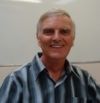BC Ministry of Community Development leverages change through infrastructure grant programs

At the first in the 2008 Comox Valley Learning Lunch Seminar Series, held in September 2008, Catriona Weidman Development elaborated on the Province’s guiding philosophy for doing business differently. Grant programs will leverage change through a combination of eligibility and assessment criteria. “We all work with rules. What we really want to do is change some of the rules, to create the kind of communities that we desire. We are using infrastructure funding to encourage the right type of projects,” stated Catriona Weidman.









